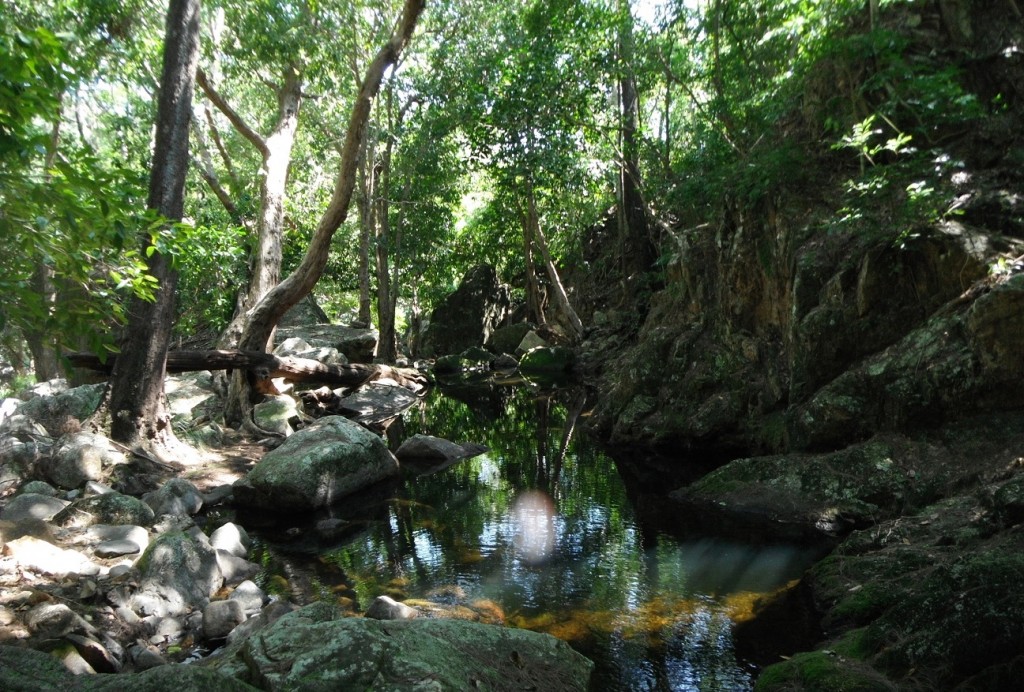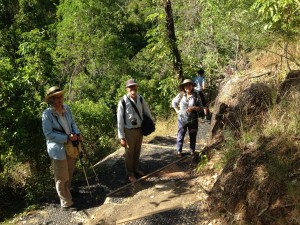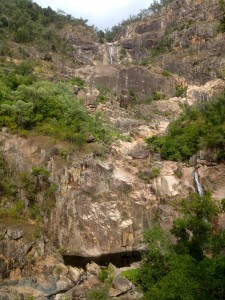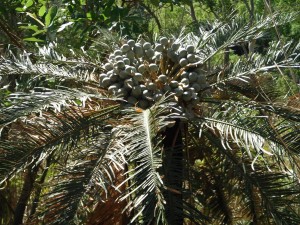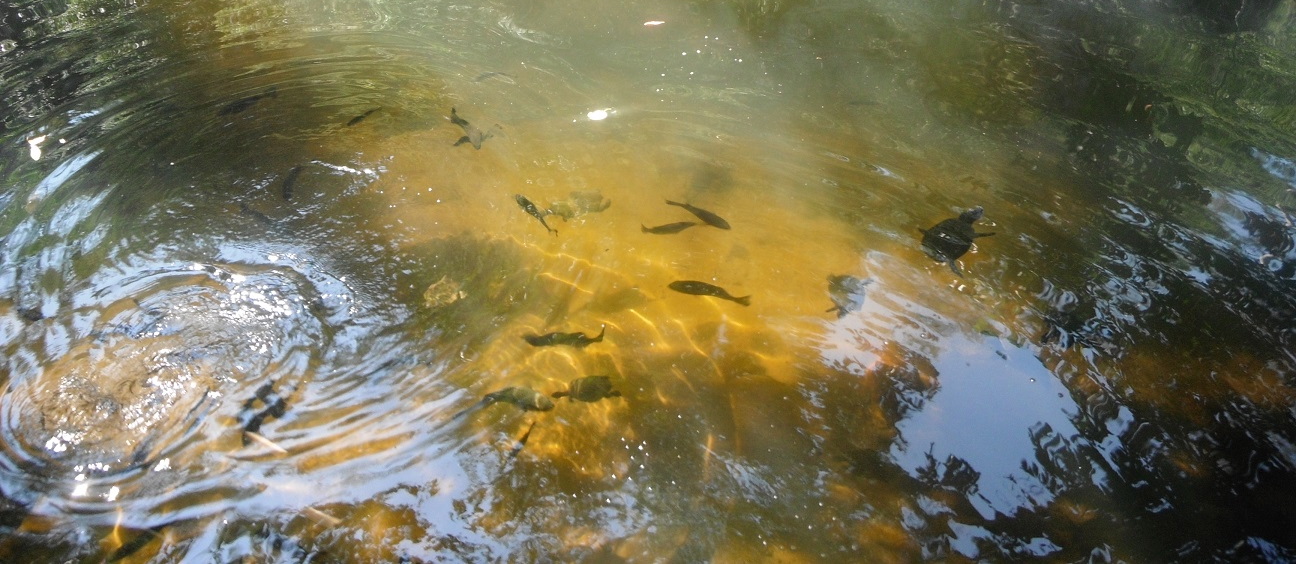Some went up and camped overnight, others spent the night in Ingham making for a short drive in the morning and the rest got up very early and came up from Townsville – in all 15 members and friends gathered at the beautiful Jourama Falls section of the Paluma Range National Park on a late autumn morning. The campers (including one new member – welcome, Barry!) had enjoyed a peaceful night in the bush with noisy pittas dropping by for dinner and breakfast while the Ingham overnighters had enjoyed a beautiful sunset walk around the Tyto wetlands.
This area of the Park surrounds beautiful Waterview Creek as it tumbles down the granite cliffs and winds through rainforest, vine forest and open woodland. After a decent wet the falls will thunder down, forming deep and inviting swimming holes and rock slides. Not so after our wet-season-that-wasn’t, but at least there was still flowing water and deepish pools for aquatic life. We followed the established track up to the falls, crossing the creek at a particularly beautiful spot. Most of us had not visited the area for some time and noted the work that had been done on the track surface to stabilise it against heavy visitor use. The recycled plastic might sound unattractive but is well-designed, durable and effective. If it reduces erosion in this high-use park, and encourages people to stay on the track, a certain reduction in the wilderness aspect is a small price to pay.
At the top of the track there are spectacular views of the falls and the rock pools at their foot. Russell pointed out the dolerite dykes in the rock which showed up as dark grey bands in the pink granite. Matchbox beans hung from their vines (Entada phaseoloides) across the gorge, umbrella trees poked their crowns up below us and what looked at first like a hoop pine emerging above the distant canopy was identified as a milky pine (Alstonia scholaris) – confusingly not a pine at all! Right by the track a cycad (Cycas media) had a mass of fruit at its centre and nectar dripped from the flower spike of a grass tree (Xanthorrhea johnsonii).
Re-crossing the creek on the return journey I was struck by the rusty-pink trunks of the river cherries (Syzigium tieneyanum) which overhung it. We also noted the plentiful, gradually ripening fruit hanging from Atractocarpus fitzalanii, confusingly also known as brown gardenia or yellow mangosteen since it is neither a gardenia or a mangosteen! I understand why botanists stick to those scientific names, difficult as they are for the lay person!
However, one long name I was glad to hear was that of the vine Tetrastigma thorsborneorum, named for those remarkable conservationists and naturalists, Arthur and Margaret Thorsborne. As it happened I went on to visit Margaret in Cardwell later that day and she was delighted to hear that Russell had seen this plant at Jourama.
Back at the picnic area we had lunch near one of the main swimming holes though, apart from one homo sapiens and his young, the only swimmers identified were jungle perch (Kuhlia rupestris) and saw-shelled turtles (Myuchelys latisternum). We missed Malcolm on this trip with his eye for invertebrates but could not miss the pair of Cairns birdwing butterflies (Ornithoptera euphorion) in trees near the campsite.
Many thanks to contributing photographers: Alison, Beth, Denise and Margaret; to Russell for the bird list and to Beth, Denise and Russell for other species identifications. Remember to click on photos to enlarge or follow this link to scroll through a much wider selection.
| Brush turkey | Large-billed gerygone | Rufous shrike-thrush* |
| Whistling kite | Yellow-spotted honeyeater | Spectacled monarch |
| Brown cuckoo-dove | Graceful honeyeater | Grey fantail |
| Bar-shouldered dove | Yellow honeyeater | Northern fantail |
| Rainbow lorikeet | Yellow-faced honeyeater | Rufous fantail |
| Scaly-breasted lorikeet | White-throated honeyeater | Spangled drongo |
| Australian swiftlet | Brown-backed honeyeater | Figbird |
| Forest kingfisher | Dusky honeyeater | Pied currawong |
| Noisy pitta | Scarlet honeyeater | Australian pipit |
| Rainbow bee-eater | Lemon-bellied flycatcher | Olive-backed sunbird |
| Spotted pardalote | Rufous whistler | Mistletoebird |
* Russell noted this is the eastern sub-species of the Little shrike-thrush





